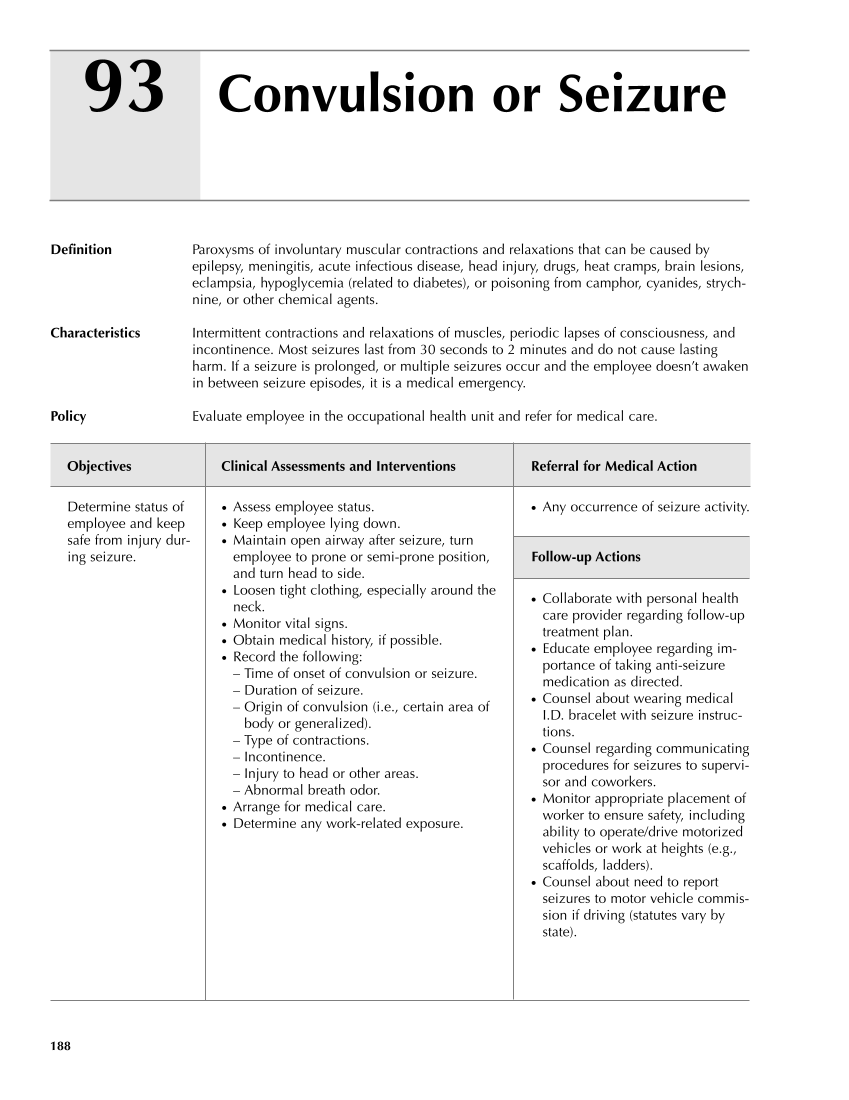93 188 Definition Paroxysms of involuntary muscular contractions and relaxations that can be caused by epilepsy, meningitis, acute infectious disease, head injury, drugs, heat cramps, brain lesions, eclampsia, hypoglycemia (related to diabetes), or poisoning from camphor, cyanides, strych- nine, or other chemical agents. Characteristics Intermittent contractions and relaxations of muscles, periodic lapses of consciousness, and incontinence. Most seizures last from 30 seconds to 2 minutes and do not cause lasting harm. If a seizure is prolonged, or multiple seizures occur and the employee doesn’t awaken in between seizure episodes, it is a medical emergency. Policy Evaluate employee in the occupational health unit and refer for medical care. Objectives Clinical Assessments and Interventions Referral for Medical Action Convulsion or Seizure ● Any occurrence of seizure activity. Follow-up Actions ● Collaborate with personal health care provider regarding follow-up treatment plan. ● Educate employee regarding im- portance of taking anti-seizure medication as directed. ● Counsel about wearing medical I.D. bracelet with seizure instruc- tions. ● Counsel regarding communicating procedures for seizures to supervi- sor and coworkers. ● Monitor appropriate placement of worker to ensure safety, including ability to operate/drive motorized vehicles or work at heights (e.g., scaffolds, ladders). ● Counsel about need to report seizures to motor vehicle commis- sion if driving (statutes vary by state). Determine status of employee and keep safe from injury dur- ing seizure. ● Assess employee status. ● Keep employee lying down. ● Maintain open airway after seizure, turn employee to prone or semi-prone position, and turn head to side. ● Loosen tight clothing, especially around the neck. ● Monitor vital signs. ● Obtain medical history, if possible. ● Record the following: – Time of onset of convulsion or seizure. – Duration of seizure. – Origin of convulsion (i.e., certain area of body or generalized). – Type of contractions. – Incontinence. – Injury to head or other areas. – Abnormal breath odor. ● Arrange for medical care. ● Determine any work-related exposure. Guideline continues on next page
Purchased from OEM Press by (ge corporate access). (C) 2013 OEM Health Information, Inc. All rights reserved.












































































































































































































































































































































































































































